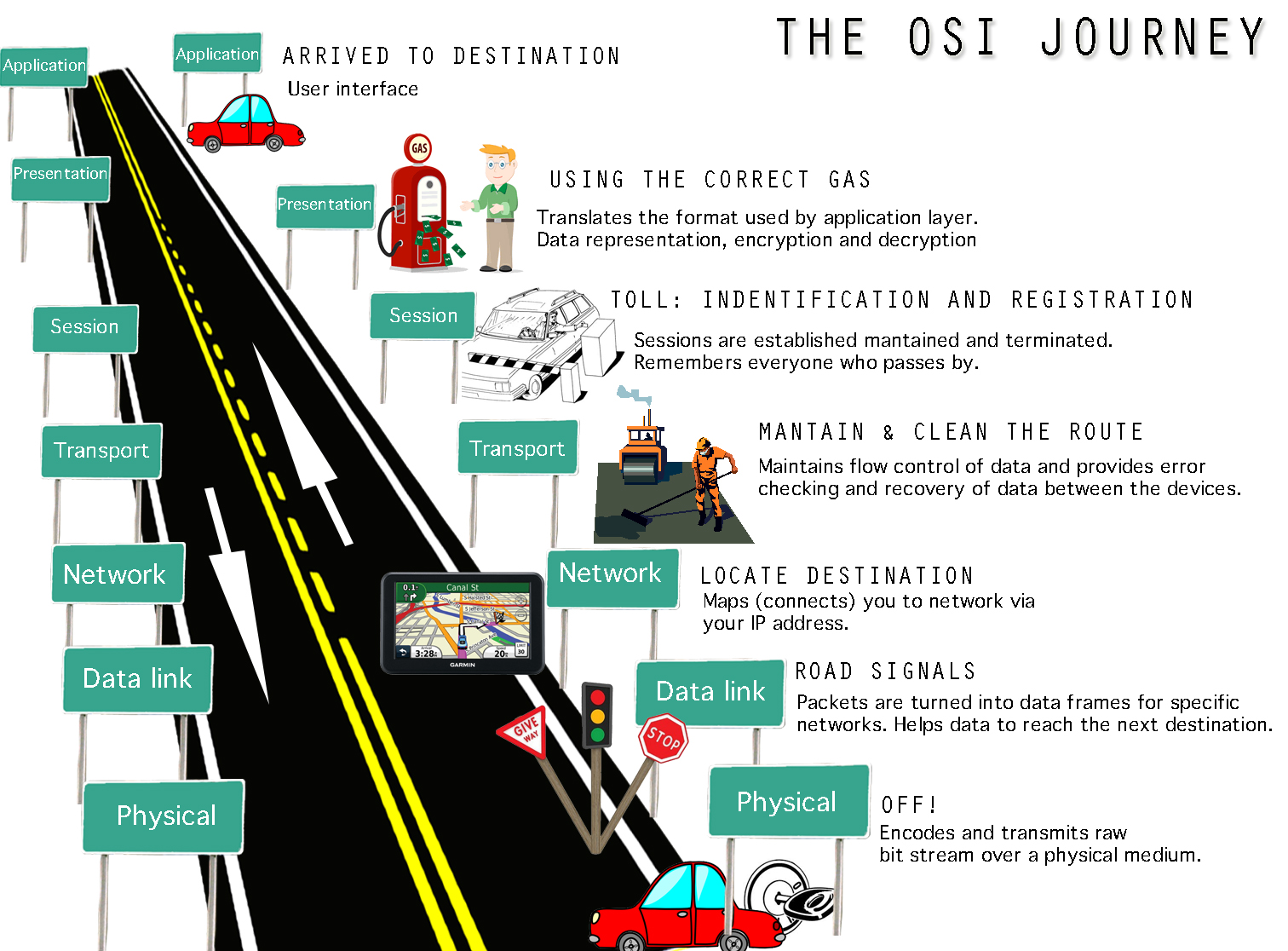
|
The OSI JourneyStudent: Tibisay ZeaThe Internet allows people to connect with family, friends, and work colleagues from across the globe in the push of a button. It sounds easy (it actually is, for the users), but every time you click on a link on the Internet or send a file to someone from one device to another, there is a big journey that the data has to take in order to make sure that everything is connected to a common network. In 1984, the International Organization for Standardization (ISO), a global federation of national standards organizations, developed the Open System Communications (OSI) as a common standard for network designs. OSI includes a set of seven layers, which are interconnected and define the different stages that data must go through to travel from one device to another over a network. This is an interconnected system: a layer serves the layer above it and is served by the layer below it. These layers are: 7. Application 6. Presentation 5. Session 4. Transport 3. Network 2. Data Link 1. Physical The Application Layer provides the window for the users and applications to access the network services. The Presentation Layer translates the format used by the application layer into a common format that can be handled by the network, and vice versa. The Session Layer establishes, maintains and ends communication with the receiving device. The Transport Layer maintains flow control of data and provides error checking and recovery of data between the devices. The most common example of Transport layer is Transmission Control Protocol (TCP) and User Datagram Protocol (UDP). The Network layer provides addresses, which routers will use to determine the path to the destination. In most cases, the logic addresses here means the IP addresses (including source & destination IP addresses). In the Data Link Layer, the packets are turned into frames for specific networks. This layer is responsible for finding the next destination device on a local network. The Physical layer encodes and transmits raw bit stream over a physical medium. On the diagram that I designed to explain the OSI model, I compare it with a highway used to communicate two cities. It takes you through 7 steps in order to reach the final destination, and then turns back and returns to the starting point. When this Web Architecture course started, I was afraid it was going to be difficult to digest. But after we kept going on the road, it turned out to be more approachable than I thought. (Although I knowledge that we just learned the tip of the iceberg). It was nice for me to understand what is the meaning of common words that we frequently see in our everyday contact with devices (e.g. IP Address, Protocols, Session, Ports), and which role they play inside this OSI model. Technology has shown no signs of slowing down and practically every device available today is somehow tied to computer technology and to this OSI model. It is amazing to think how this way of communication has changed every field imaginable in the world. It has even shaped our lifestyle and the personality of several generations. It's true that technology has also made society somewhat impersonal. Like everything new in life, it brings challenges, opportunities, risks and problems. |